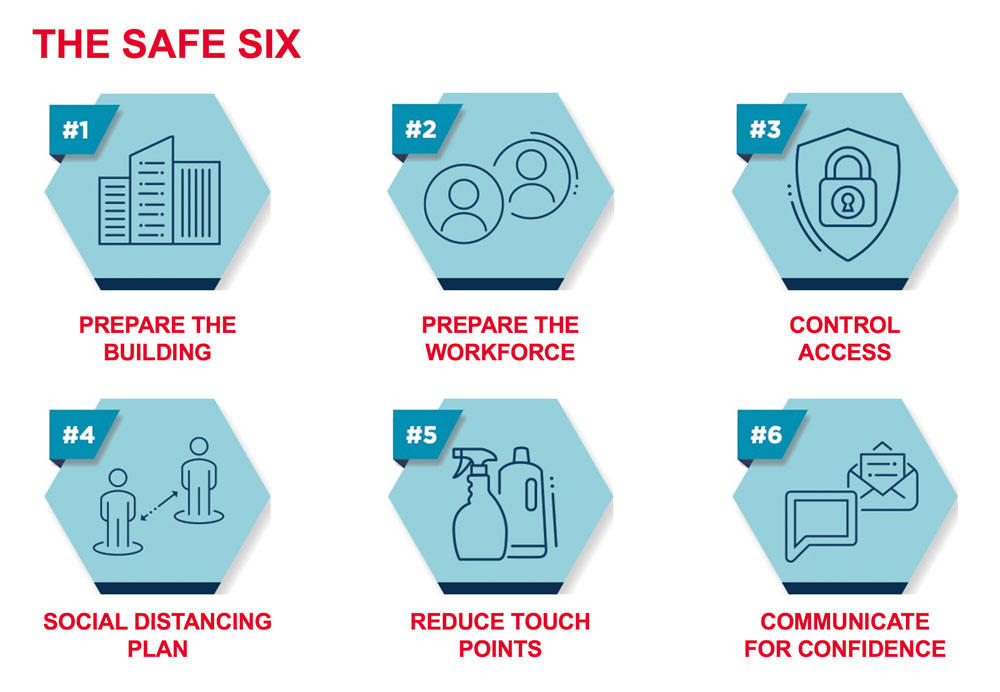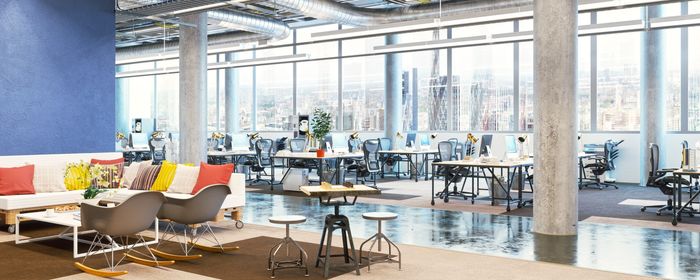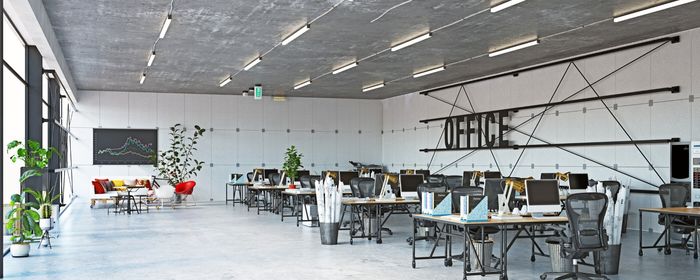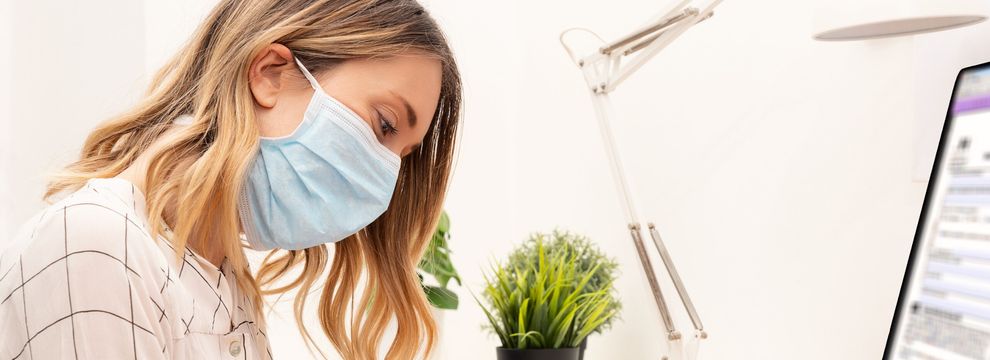One day we will all wake up, a brilliant sun will rise, and all of a sudden covid-19 will be gone. We will all go back to work, restaurants, gyms, ball games, theaters.
We wish. That’s not going to happen.
Instead, as infection rates decline and testing kits improves, cities, states, and countries will slowly start to open up for business. Many staff will be afraid to return, having been quarantined at home for weeks or months. Others may not be able to return due to closed schools or changed circumstances.
This article provides advice on security’s role in how to prepare for resumption of on-site work, how to communicate effectively and empathetically to returning staff, and how to adjust security measures and adapt crisis plans. Here are some issues to consider:

Preparing for a Return to the Office
What do you need to consider to safely, securely bring employees back to the workplace? Here is the checklist to consider as you build short- and long-term guidelines and processes for your specific workplace.
- Security should be part of the team that helps determine how many staff need to return, how many can continue working at home, and how many will split between the two
- Does the physical space meet the demands of the new normal? E.g., the organization may need to rethink its open office plan and reintegrate minimal staff until it can find a more suitable location. Alternatively, an open office can be a blessing for new distancing requirements; consider adding cubicle walls, “sneeze guards,” etc.
- Staff spaces may need to be reoriented to accommodate at least 6 feet of distance from any other workstation
- Security and safety should team to balance security issues with hygiene and cleanliness issues, such as whether to remove or prop open internal doors to minimize areas of common touch
- Anyplace where widespread touching will occur (refrigerator handles, conference room chairs and tables, restroom door handles) should have sanitizer and/or napkins and a waste receptacle nearby
- Security may wish to soften its image during the transition and act as a facilitator rather than as an imposing presence
- But will security be deployed to assist in cleaning duties? Will that undermine their authority?
- Should the office make masks available (in office environments) to allay fears and demonstrate concern? Is it part of the company’s duty of care?
- Are contract guards still a viable option? Will staff feel more comfortable with people they know? Did a specific officer greet staff pre-pandemic? If possible, that person should return to that position to create comfort and continuity
- If the facility has limited parking, can space be freed up for returning workers who fear riding public transport?
Adjusting Security to the New Environment
The reality is most companies were not prepared for a pandemic, and especially what comes next after a crisis of this magnitude. Most likely, security teams will need to create and implement a completely new security plan that can easily be changed or altered based on the evolving situation and release of new information and protocols from the CDC and experts.
- Ideally, security has a business resumption plan that was created before the crisis; whether that’s so or not, it will almost certainly have to be adjusted for the circumstances
- Security staff may need to help create social distancing, perhaps by marking floors early on and policing for improper activity
- Technology is available that can track staff presence on site and enforce distancing; consider the positive and negative effects on morale, privacy, and camaraderie
- How will visitors be handled? Will they be questioned about symptoms and exposure? Will they have their temperature taken? (If so, consider HIPAA issues.)
- Will they be enrolled in the access system (with perhaps another access card that can be contaminated) and escorted? Visitors will have to be discreetly informed about social distancing policy, which both visitors and escorts will have to abide by
- Consider installing or at least trialing touchless access control, typically via biometrics; assess the various biometrics such as face recognition, voice, iris, retina, gait, etc.
- If security guards are posted at reception, consider installing a protective screen
- Security should watch carefully for troubling changes in employees, such as anger, depression, aggression, or mistrust and communicate concerns with business managers
- Security should consider refresher training on deescalating tense situations
- HR and security should be prepared for complaints about disparate treatment or hostile workplace if some staff must come to the office while staff with similar duties can work remotely
- With offices empty, this may be an ideal time to replace an access control system; frozen budgets among many organizations mighty mean that system manufacturers, installers, and integrators will be available and open to negotiating
- Travel risk management will need to include health and safety more prominently, in addition to physical security, political and country risk analysis, crime rates, etc., and travel is not likely to rebound to pre-pandemic levels for months
- With the normalization of Zoom, Skype, and other online conferencing platforms, face to face meetings may decline in importance, eliminating the need for travel
- Weigh the cost vs benefit of removing doors within access controlled areas to decrease objects that staff must touch vs maintaining barriers to enhance social distance between staff members
- Economic recession typically triggers insider crimes such as espionage, data misappropriation, theft, and embezzlement; security should pay special attention to those sorts of risks, with refresher training offered to relevant staff
- Security and other departments responsible for brand management should monitor social media to track how the organization is being depicted after the pandemic
- Ensure that any new security measures don’t run afoul of contracts with unions
- Ensure that the IT infrastructure is robust, secure, and scalable; now might be a good time to invest in improvements
- Update any security protocols that might have been devised on the fly or temporarily to accommodate limitations
Communicating to Staff
Ideally, management will have been communicating with staff on a frequent and regular basis during the pandemic, expressing concern about their well-being. It’s crucial to ensure security is part of the message. Security teams should be part of the internal efforts that communicate information about return to the office.
- Management should agree on a consistent message before communicating, in a unified voice, a resumption process
- Communication, likely via email, should acknowledge the difficulty that we have all shared the last few weeks/months, and thank them for their part in flattening the curve.
- To the extent possible, management should be sensitive to staff reluctance to return to the office
- Staff should be given a rough timetable for expected return, and what the new normal will probably look like (e.g. planned growth of 20% remote workers pre-pandemic to 50% post-pandemic) and what prophylactic measures will be put in place (e.g. temperature taking at the entrance)
- Security should emphasize the availability of HR staff and the company EAP to care for their well-being
- Facilities should also communicate planned changes in office design, but allow the staff to participate in the process so they have ownership and can put their mind at ease
- If they choose this strategy, security should communicate its willingness to aid in the transition back to the office
Legal Considerations
Boma International published a comprehensive Return to Work plan to prepare buildings for re-entry amid COVID-19 and it addresses a potentially overlooked area: legal considerations. This includes liability, responsibilities, contracts, leases and staff.
- If the building manager or property owner becomes aware an individual who tested positive for COVID-19 was at the premises (whether its own employees, tenants, or visitors), there may be a duty to warn other tenants and employees and/or prevent access to certain areas in the building. However, be sure to protect the identity of the infected person and his/her employer; we suggest you announce only the floor or area of the building where that person worked or visited
- Identify all contracts for construction or other services that were in effect or in final negotiations prior to stay-athome mandates. Determine which contracts should be amended, canceled, or delayed and discuss force majeure and other legal exposures and remedies with legal counsel
- Review and consider revising leases to include new and additional tenant insurance requirements, protection of landlord from rent abatement and loss-of-use claims, and hold harmless protection
- Owners, managers, and legal counsel should work together to develop criteria for responding to tenant requests for rent or lease term adjustments
- Ensure you understand and follow employment-related laws and regulations before implementing new staffingrelated rules, procedures, work requirements, hours/shifts, and other new requirements and protocols
The Safe Six
Cushman and Wakefield’s “Recovery Readiness: A How-to Guide for Reopening your Workplace,” outlines some of the best thinking and practices that more than 53,000 professionals have compiled across the globe. The guide details the “Safe Six” Checklist, a handful of operational guiding principles to help navigate the return to the workplace.
- Prepare the Building
- Prepare the Workforce
- Control Access
- Create a Social Distancing Plan
- Reduce Touchpoints & Increase Cleaning
- Communication for Confidence





